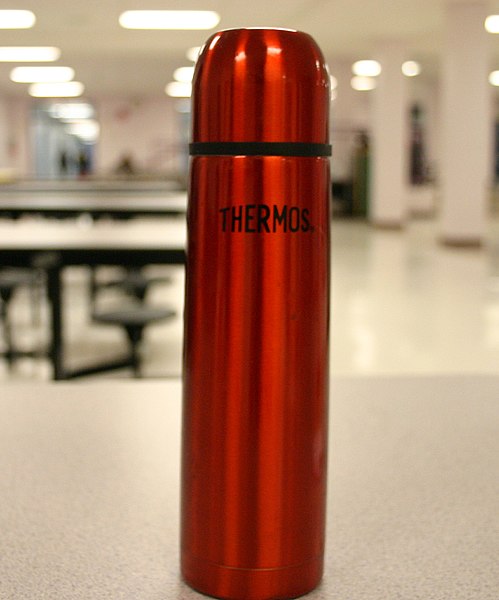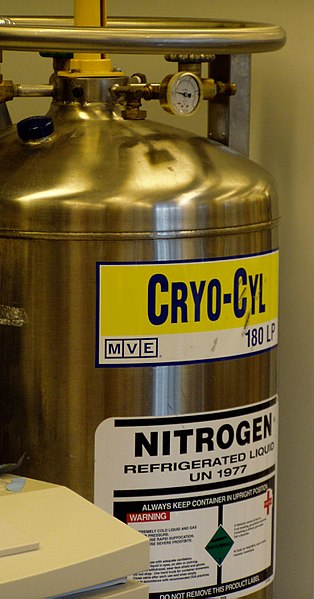Sir James Dewar was a British chemist and physicist. He is best known for his invention of the vacuum flask, which he used in conjunction with research into the liquefaction of gases. He also studied atomic and molecular spectroscopy, working in these fields for more than 25 years.
James Dewar
Dewar's vacuum flask in the museum of the Royal Institution
Sir James Dewar's ashes at Golders Green Crematorium
Portrait by René le Brun, Comte de L'Hôpital, in the collection of the Royal Society of Chemistry
A vacuum flask is an insulating storage vessel that slows the speed at which its contents change in temperature. It greatly lengthens the time over which its contents remain hotter or cooler than the flask's surroundings by trying to be as adiabatic as possible. Invented by Sir James Dewar in 1892, the vacuum flask consists of two flasks, placed one within the other and joined at the neck. The gap between the two flasks is partially evacuated of air, creating a near-vacuum which significantly reduces heat transfer by conduction or convection. When used to hold cold liquids, this also virtually eliminates condensation on the outside of the flask.
The typical design of a Thermos brand vacuum flask, used for maintaining the temperature of fluids such as coffee
Laboratory Dewar flask, Deutsches Museum, Munich
A cryogenic storage dewar of liquid nitrogen, used to supply a cryogenic freezer
1930s "Thermofix" vacuum flask








